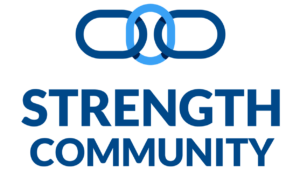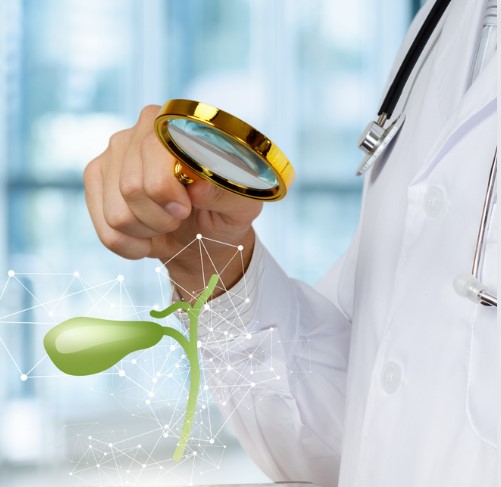What is the Gallbladder?
The gallbladder is a small sac that sits under the liver.
You might think that gallbladder does not do much but it has a crucial role in health and disease.
According to some estimates, more than 20% of Americans develop some kind of gallbladder problem, with stones being the most common (1).
The liver cells produce a yellowish-brown or olive-green colored fluid called the bile.
Bile contains water, bile salts, cholesterol, and proteins.
The liver produces 800-1000 ml of bile daily.
The bile travels from the liver and goes through a series of ducts called bile ducts that open into the gut.
A small quantity of the bile enters the gallbladder. Inside the gallbladder, the bile concentrates and gets released when you eat food.
Factors that affect gall bladder health and increase the risk of its dysfunction include (1):
- Obesity
- Rapid weight loss
- High caloric diet
- Drugs (such as diuretics and antibiotics)
- High cholesterol level
- Conditions like cystic fibrosis and inflammatory bowel disease
What is the role of the Gallbladder in Health?
Following are some of the most important roles of gallbladder and bile in health.
1- Bile from Gallbladder Helps in Fat Digestion
If it were not for the bile, most of the dietary fat will remain undigested.
When food containing fat enters the small intestine, the hormone cholecystokinin (CCK) is released, which stimulates the gallbladder to contract and release bile into the duodenum, the first section of the small intestine.
Bile emulsifies fats, breaking them down into small droplets that can be more easily digested by enzymes called lipases.
This process increases the surface area of fats, allowing for better absorption of nutrients into the bloodstream.
Bile also helps to neutralize stomach acid and prevent bacterial growth in the small intestine.
2- Bile from Gallbladder Assists in Energy Regulation
The role of gallbladder and bile in energy regulation is gaining traction.
Research suggests that bile acid interacts with a series of cell receptors that help regulate the levels of triglycerides, cholesterol, insulin, and blood pressure.
Research suggests that a lack of bile or bile receptors leads to a higher chance of metabolic syndrome. The features of metabolic syndrome include obesity, high blood pressure, diabetes, and dyslipidemia (2).
Research also suggests that bile directly regulates the release of ‘hunger hormones’.
When you eat food, it triggers the release of bile. Higher levels of bile trigger the release of hunger hormones like glucagon-like peptide-1 (GLP-1) and Peptide YY (PYY).
These hormones induce satiety and reduce appetite (3).
3- Other Health Benefits
A lot more research is pouring into the additional health effects of the gallbladder and the bile it releases.
Research suggests that bile from the gallbladder helps regulate the levels of good microbiota in your gut. Research also suggests that gallbladder bile helps in brain signaling (4).
What is the Role of Gallbladder in Disease?
1- Gall Stones, Biliary Obstruction, and Cholecystectomy
Gallstones are one of the most common disorders of the gallbladder, and they can cause a range of symptoms including abdominal pain, nausea, and vomiting.
Gallstones are small, hard deposits that can form in the gallbladder when the concentration of cholesterol or bilirubin in bile becomes too high.
Factors that can increase the risk of developing gallstones include obesity, rapid weight loss, a diet high in fat and cholesterol, and certain medical conditions such as diabetes and Crohn’s disease. In some cases, gallstones can cause inflammation of the gallbladder, a condition known as cholecystitis, which can be a medical emergency if left untreated.
Bile duct obstruction is another common problem of the gallbladder, which can result from various causes such as tumors, gallstones, and infections.
When the bile ducts are blocked, bile accumulates in the liver, leading to jaundice, a condition characterized by yellowing of the skin and eyes. Other symptoms of bile duct obstruction include abdominal pain, fever, and itching.
Treatment for bile duct obstruction depends on the underlying cause and may involve surgery, medication, or endoscopic procedures to remove the obstruction.
One of the main functions of the liver is to help filter the blood and help remove harmful toxins through a multi-stage process.
Some of these toxins get excreted from the body through the bile.
If the gall bladder does not function properly if there is an obstruction in the flow of the bile, it can alter the detoxification process.
Research suggests that any obstruction in the flow of bile reduces the expression of liver enzymes crucial for its detoxification function (5).
In some cases, the gallbladder may need to be removed surgically, a procedure known as cholecystectomy.
This is typically done when there are recurrent or severe gallstones, or when the gallbladder is not functioning properly due to disease or injury.
While the gallbladder is not an essential organ and can be removed without causing significant harm, it can affect digestion and the metabolism of fats.
2- Effects of Gallbladder Removal
If you suffer from gallbladder issues, the removal of the gallbladder might not be the end of your troubles.
Gallbladder removal can have long-term consequences.
Since your gallbladder helps regulate the bile, digest the fat, and detoxify toxins, your body loses this regulatory function after gallbladder removal.
The bile salts flow into the gut unchecked and lead to a condition called Bile Acid Diarrhea (BAD).
This can lead to the malabsorption of lipids, cholesterol, and fat-soluble vitamins (6).
You might continue to exercise pain after gallbladder removal. This is called post-cholecystectomy syndrome.
In addition, if the surgery is not properly done and some stones are left along the bile ducts, they can dislodge and block the bile ducts.
This can lead to acute blockage of bile ducts and can lead to a life-threatening situation.
Fitness and Gallbladder Health
There is a profound link between the level of physical activity and gallbladder health.
Here is how physical activity improves gallbladder health, as per research (7):
- Physical activity significantly reduces the risk of gallbladder stones. Moderate to high levels of physical activity can reduce the chances of gallstones by 70%.
- Exercise improves lipid and cholesterol metabolism and this further reduces the risk of gallbladder issues like gallstones.
- Exercise improves the motility of the gallbladder and the gut. It keeps the bile salts in circulation and prevents complications due to stagnant bile.
- Exercise improves the quality of life and reduces pain perception in individuals suffering from gallstone pain.
- Some research suggests that physical activity directly reduces the risk of gallbladder cancer.
Conclusion
Gallbladder is often an overlooked organ but it holds great importance in health and disease. Physical exercise is one way of optimizing gallbladder health and preventing complications such as gallstones.
References:
- Stinton LM, Shaffer EA. Epidemiology of gallbladder disease: cholelithiasis and cancer. Gut Liver. 2012 Apr;6(2):172-87.
- Lefebvre P, Cariou B, Lien F, Kuipers F, Staels B. Role of bile acids and bile acid receptors in metabolic regulation. Physiol Rev. 2009 Jan;89(1):147-91.
- Xie C, Huang W, Young RL, Jones KL, Horowitz M, Rayner CK, Wu T. Role of Bile Acids in the Regulation of Food Intake, and Their Dysregulation in Metabolic Disease. Nutrients. 2021 Mar 28;13(4):1104.
- Singh J, Metrani R, Shivanagoudra SR, Jayaprakasha GK, Patil BS. Review on Bile Acids: Effects of the Gut Microbiome, Interactions with Dietary Fiber, and Alterations in the Bioaccessibility of Bioactive Compounds. J Agric Food Chem. 2019 Aug 21;67(33):9124-9138.
- Chai J, Feng X, Zhang L, Chen S, Cheng Y, He X, Yang Y, He Y, Wang H, Wang R, Chen W. Hepatic expression of detoxification enzymes is decreased in human obstructive cholestasis due to gallstone biliary obstruction. PLoS One. 2015 Mar 23;10(3):e0120055
- Farrugia A, Attard JA, Hanmer S, Bullock S, McKay S, Al-Azzawi M, Ali R, Bond-Smith G, Colleypriest B, Dyer S, Masterman B, Okocha M, Osborne A, Patel R, Sallam M, Selveraj E, Shalaby S, Sun W, Todd F, Ward J, Windle R, Khan S, Williams N, Arasaradnam RP. Rates of Bile Acid Diarrhoea After Cholecystectomy: A Multicentre Audit. World J Surg. 2021 Aug;45(8):2447-2453
- Shephard RJ. Physical Activity and the Biliary Tract in Health and Disease. Sports Med. 2015 Sep;45(9):1295-1309. doi: 10.1007/s40279-015-0346-3.

